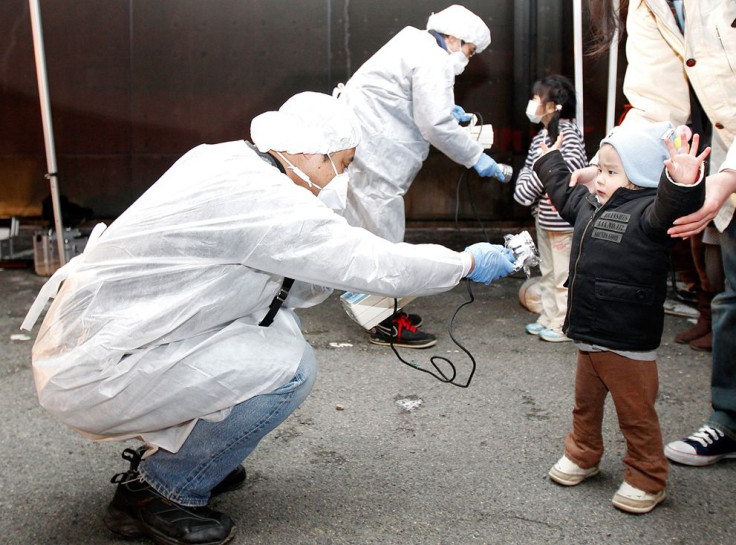New Fukushima Radiation Study Looks Ahead To Future Cancer Risks

A new study of Japanese communities near the Fukushima Daiichi Nuclear Power Plant shows a lingering risk of radiation exposure remained more than a year after the March 2011 meltdown.
For the study, a group of Japanese scientists led by a team from Kyoto University recruited 483 people living within 20 to 50 kilometers (12 to 31 miles) of the Fukushima Daiichi plant. For two months in 2012, participants wore personal devices called dosimeters that measured their radiation exposure from the ground, air, and food. (While the Fukushima accident ended up releasing large amounts of radioactive water into the ocean, this would not have been a significant exposure risk for people living near the plant, since fishing operations in the area have been suspended -- and may remain so after additional leaks.)
The scientists calculated that in 2012, the study participants received an average radiation dose of anywhere between .89 and 2.51 millisieverts per year (mSv/y) as a consequence of the radioactive cesium released by the Fukushima accident. That’s fairly close to the estimated 2 mSv/y level of background radiation that the average Japanese person is exposed to from natural sources, but above the usually permissible dose of 1 mSv/y. For comparison, a head CT scan exposes a patient to about 2 mSv of radiation; the maximum yearly dose permitted for U.S. radiation workers is 50 mSv.
So, what does the future hold? The researchers project that by 2022, radioactive cesium will break down enough that the average annual dose rate in their three study areas will stay below 1 mSv/y.
“The extra lifetime integrated dose after 2012 is estimated to elevate lifetime risk of cancer incidence by a factor of 1.03 to 1.05 at most, which is unlikely to be epidemiologically detectable,” the authors wrote in a paper published on Monday in the Proceedings of the National Academy of Sciences.
For instance, in the Tamano area, located in the city of Soma, researchers expected that the incidences of all solid cancers will increase by 1.06 percent in the lifetimes of participants as a result of post-2012 radiation doses. Leukemia and breast cancer incidences are expected to jump by .03 percent and .28 percent, respectively, thanks to post-2012 radiation doses. Females and infants are expected to be more at risk for cancers thanks to the accident than males and young adults.
The study does have some limitations.
“This assessment was derived from short-term observation with uncertainties,” the researchers noted.
The study also did not measure exposure to radioactive iodine, or factor in the effect of radiation doses within the first year of the accident. Though radioactive iodine is a serious health hazard, it has a half-life of just eight days, making it much harder to detect a year after the accident (radiocesium, by contrast, has a half-life of about 30 years).
The study population is also relatively small, as Greenpeace nuclear expert Rianne Teule noted.
“Large cities like Fukushima City and Koriyama City have also been exposed, and hence a large population is being exposed to low dose radiation,” Teule wrote in an email. “Whether any health effects will be detectable on the long term, will only become clear after many years.”
Though the average radiation dose for a Fukushima-area resident was relatively low, the radioactive material is expected to linger in the ground for some time. If residents venture into the most contaminated areas near the plant, or eat plants or animals from those areas, their risk for radiation exposure may spike.
“Food supply and associated regulations are considered effective in the study areas in Fukushima thus far,” the authors wrote. “However these [radiation dose] levels can be easily elevated when residents preferentially take contaminated mushrooms and wild boar meats from the field, as in the case of the Chernobyl accident.”
SOURCE: Harada et al. “Radiation dose rates now and in the future for residents neighboring restricted areas of the Fukushima Daiichi Nuclear Power Plant.” Proceedings of the National Academy of Sciences published 24 February 2014.
© Copyright IBTimes 2025. All rights reserved.





















